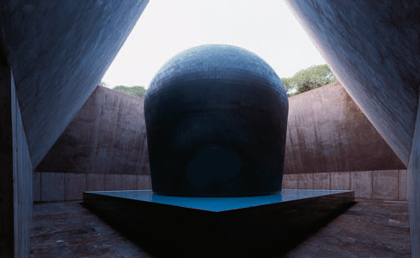“First of all, I am not dealing with an object. The object is perception itself. Secondly, I am not dealing with an image, because I want to avoid any associative symbolic thought. Thirdly, I am not dealing with a special purpose or focal point, either. With no object, image or purpose, what are you looking at? You are looking at yourself looking.”

SECONDWIND 2005 – 2009
The historical and artistic relevance of the work of James Turrell (Los Angeles, California, 1943) lies in his ability to examine the way in which we perceive light, and to isolate those features and present them to the viewer in each of his works. Instead of showing us the results of his research into the psychological perception of light, Turrell wants viewers to discover them for themselves, through their own experience. With his artworks, he offers us the chance to understand the various features of light and solar energy, and how the retina responds when faced with the changes in brightness and colour that take place throughout the day and in our planet’s two different hemispheres.
In this project, Turrell has managed to create the illusion that the sky is just within our reach, blurring the dividing line between matter and emptiness. To enter the skyspace is to come closer to the immensity of the cosmos, making one question the difference between vision and perception.
For over three decades now, Turrell has been working on the most important project of his career, Roden Crater, an extinct volcano in the Arizona desert which his is turning into a laboratory on light perception – a celestial observatory. Alongside this major project, Turrell is also working on his exhibitions and on a number of highly complex architectural projects which are part of his series of spaces for light, known as skyspaces. Many of these came about as a result of his studies at Roden Crater.
Second Wind 2005 is an architectural piece, located underground, in which viewers enter an inner pyramid, via a tunnel. Inside is a stone stupa, surrounded by a pool. Stupas are circular domes used in Buddhist architecture, and whose shape and position have the effect of making the cosmos appear closer. The passageway into the stupa leads to a room with a circular hole in the ceiling, open to the sky. Here, visitors can sit down and watch the changes of light “sculpted” by the artist. Turrell particularly recommends enjoying it at sunset, the moment of transition from day into night, when light is at its most intense and the colours of the sky are enhanced, altering the viewer’s perception of the sky as a space, a shape and an object.


